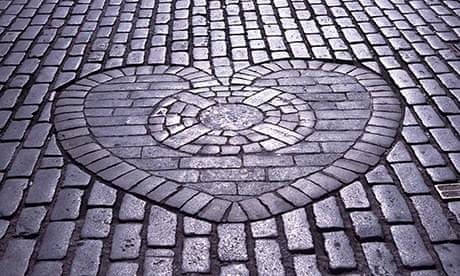What should be at the heart of a smart city?
According to Antoni Vives, deputy mayor of Barcelona, the real focus of a smart city should not be architecture, nor technology, important though these are, but citizens, better regulation and smarter procurement.
Hosting last week's global conference on smart cities, Vives said that while big IT companies have been trying to convince local authorities that technology is the answer, people are fed up with having centralised projects foisted on them. "There is nothing more dangerous than an eager architect dressed in black and a stupid mayor, because then you get strange things put in the middle of a city," he said. "We have the same thing with smart cities – a stupid mayor and an eager company putting strange stupidities into the heart of the city. We are trying to put citizenship at the beginning of the definition of the project."
Truly smart cities such as Helsinki are using technology that is already out on the streets and on the web, enabling residents to input and update via smartphones, while apps help them to navigate the city more efficiently.
There is certainly a place for technology in smart cities, but local leaders at the conference were clear that the definition of smart cities is shifting.
"For us it's not a question about if we become smart, it's how and how fast," said Brenna Berman, chief information officer of the city of Chicago, whose comments could be echoed bybeleaguered public officials around the world. "Our population is growing, the needs of that population are changing and becoming more demanding, and the resources the city has to meet them are shrinking... So we don't question whether or not Chicago needs to become smarter or savvy-er in its use of technology, it just simply is the only way we'll be able to meet the demands of our residents."
Some of the barriers to making cities smarter were outlined at the conference. Charbel Aoun, senior vice president at Smart Schneider Electric, a huge cheerleader for smart cities, alongside companies like IBM and Microsoft said smart cities are happening, but not at the speed his company had hoped, due in part to the cultural and language barriers between those from the private and public sectors working on these projects. "We have a language barrier from the private sector," he said."We're learning, but we have a lot to learn and vice versa. The technology conversation in many cities is a black hole."
Aoun laid some of the blame for this on local politicians. With smart technology projects often taking a long time to implement, Aoun said it is rare to find a politician who is willing to embark on this journey, knowing that they will not be around to cut the ribbon". He also says regulation is proving a major barrier to technology infrastructure projects. "There are certain things as an industry we can help [cities with], and there are certain things we cannot," he said. "A lot of cities tell us 'we want to do A, B, C and D', and the private sector is willing to, but guess what – regulation will not allow us to do it." The key to smart cities is "smarter regulation and smarter procurement".
The conference heard examples of the changing ways cities are becoming smart. Melanie Nutter, director of San Francisco's environment department, said her city is meeting its carbon emissions reductions targets, improving quality of life, health outcomes and reducing energy bills, from relatively modest investments."We are at 14.5% below 1990 levels of carbon emissions as of 2010", said Nutter A goal of 100% renewable energy by 2030 is being met in part by educating local citizens in the benefits of installing their own micro-generation. An online energy map shows all 4,000 solar installations in San Francisco for residents to see, click on, and understand if it could work for them.
Nutter said the map is a tool that all residents and businesses can use to find out what the solar potential is of their home and potential energy rebates. She said it had directly helped solar investment in the city and reduced grid dependence, simply through resident engagement, something any city could replicate.
Want your say? Email sarah.marsh@theguardian.com to suggest contributions to the network
Not already a member? Join us now for more comment, analysis and the latest job opportunities in local government.

Comments (…)
Sign in or create your Guardian account to join the discussion